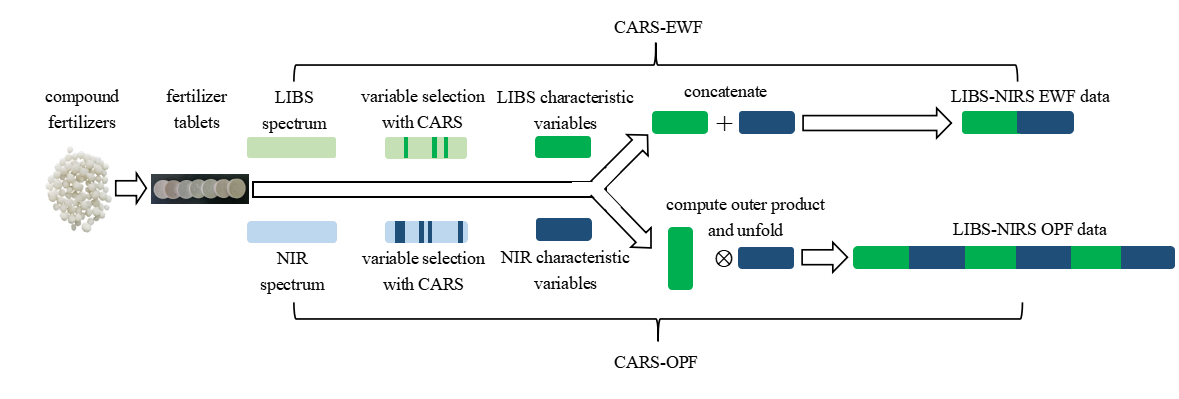
In a study published in Talanta, a research team led by Prof. WU Yuejin from Hefei Institutes of Physical Science (HFIPS) of Chinese Academy of Sciences (CAS) developed a data fusion strategy based on near-infrared spectroscopy (NIRS) and laser-induced breakdown spectroscopy (LIBS) for the rapid and accurate detection of the main components of compound fertilizers.
Compound fertilizer plays a dominant role in the structure of fertilizer products in China, and the content of nitrogen, phosphorus and potassium is the key index affecting the efficiency and price of compound fertilizer. LIBS and NIRS are two ideal technologies for on-line monitoring these main components of compound fertilizer. However, the application of LIBS and NIRS has matrix effects, interference from environmental factors, and the limitation of direct determination of inorganic components.
In this study, researchers discovered that by combining spectral data from LIBS and NIRS, as well as combining analytical approaches, it's possible to overcome these restrictions and realize faster detection with improved accuracy.
They employed 168 compound fertilizer samples as test objects to analyze the data of LIBS-NIRS under different optimization conditions and methods. It is found that the LIBS-NIRS data fusion model based on CARS-OPF(competitive adaptive reweighted sampling combined with extranet fusion) and CARS-EWF(competitive adaptive reweighted sampling combined with equal weight fusion) have better quantitative analysis performances than the single spectroscopic methods.
The combination of LIBS-NIRS methods based on CARS-OPF and CARS-EWF demonstrates promise for the rapid and accurate detection of key elemental contents in compound fertilizers. The determination coefficients of prediction (R2) for the contents of the three elements in compound fertilizers by use the proposed LIBS-NIRS models ranged from 89.5% to 96.2%. The results of the best models were improved by 0.25% to 5.62% when compared with those obtained using NIRS method and 10.6% to 33.5% compared with those obtaining using LIBS method.
"Based on this research, we can further combine multiple spectrometers to develop high-accuracy detection devices," said Dr. WANG, corresponding author of the study, "It has a good prospect in the application of online accurate monitoring of compound fertilizer quality."

Flowchart of LIBS and NIRS data fusion methods (Image by XU Zhuopin)